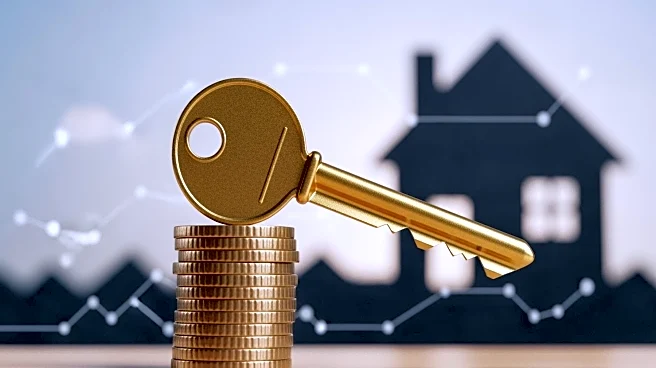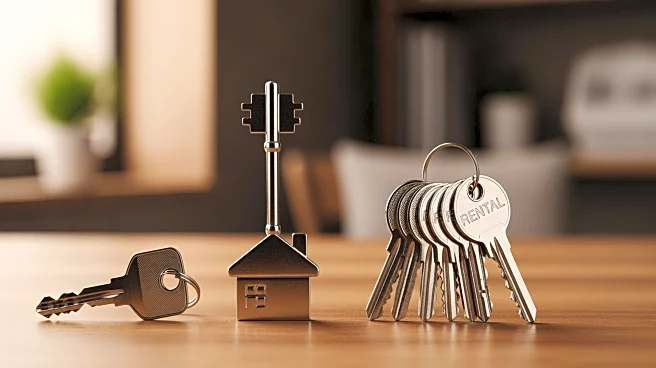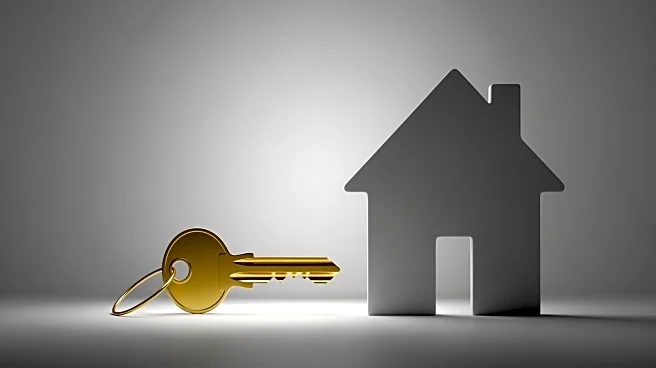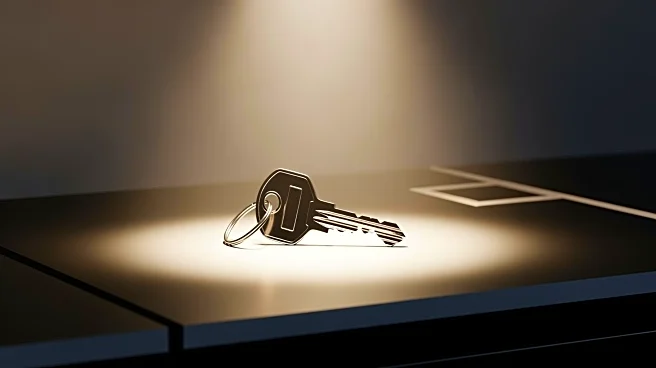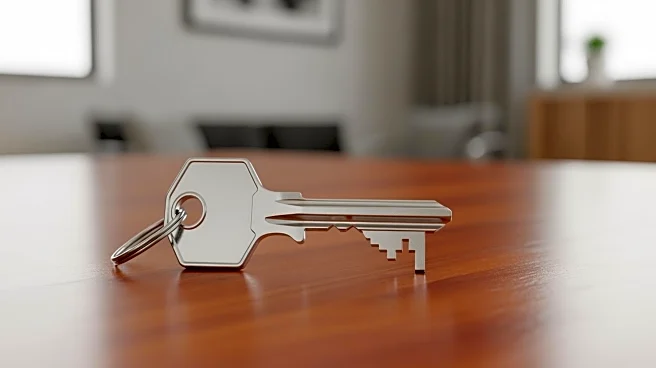What's Happening?
The typical downpayment for a home purchase in the third quarter of 2025 was $30,400, marking a significant increase of 118% compared to 2019. This trend reflects shifting market dynamics, as high prices
and borrowing costs continue to challenge affordability, according to Realtor.com. The report highlights that sales of homes priced above $750,000 have increased, while lower-priced sales have declined. The average homebuyer FICO score has risen to 735, indicating a concentration of homebuying among higher-income households. Real estate investors are also playing a significant role, accounting for roughly one-third of home sales.
Why It's Important?
The increase in downpayments and the concentration of homebuying among higher-income households suggest a shift in housing access, potentially exacerbating inequality in the housing market. This trend could impact the ability of first-time buyers and lower-income individuals to enter the market, as they face higher financial barriers. The report indicates that real estate investors are benefiting from the sidelining of traditional buyers, which could further skew the market dynamics. The regional variations in downpayment sizes also highlight disparities in housing affordability across the U.S.
What's Next?
As mortgage rates continue to edge lower, there may be more variety in who can buy homes, potentially leading to smaller downpayments. However, unless inventory grows significantly, renewed competition could drive prices and downpayments higher again. The market may see a shift in dynamics as more buyers enter, but the overall impact will depend on inventory levels and economic conditions.
Beyond the Headlines
The current housing market trends raise ethical concerns about access to affordable housing and the role of investors in shaping market dynamics. The concentration of homebuying among higher-income households could lead to long-term shifts in community demographics and economic inequality.
